Intimations of mortality of an incumbent regime, especially a civilian government, are nothing new for Pakistan. But doomsday scenarios about the imminent demise of the not just the political system but also the State have never been peddled as furiously and with as much conviction as they are being today, over the internet, on TV channels and in newspaper columns. The catastrophic floods that have swept through Pakistan, drowning about a fifth of the country and displacing around 20 million people, have prompted analysts, commentators and a section of politicians to become almost hysterical in predicting the impending collapse of the ‘system’ (political, economic, social and administrative), and perhaps even a revolution in the country.
There is no denying that the floods are a major catastrophe which Pakistan will find difficult to come out of. But the apocalyptic picture being portrayed by the anchorocracy (TV anchors, most of them with right-wing, Islamist proclivities, who have taken upon themselves to set the national agenda and pronounce and propound on everything without knowing much of anything) needs to taken with a pinch of salt, since much of the rhetoric is heavily political and aimed primarily at deposing the current ruling dispensation.
This is not to rule out the possibility of large scale civil unrest leading to a complete breakdown of state authority and ultimately unravelling the Pakistani state. Even before the ‘mother of all floods’, Pakistan was in a very precarious state. The ‘phony’ War on Terror being fought by the Pakistan army – fighting local Taliban but at the same time providing support and sanctuary to Islamist fighters active in Afghanistan – had split the country down the middle. The spate of terrorist attacks in Pakistan's heartland had demoralised the public. The tide of extremism and fanaticism showed no sign of ebbing, largely because of the ambivalent stand of the Pakistani state on the issue of radical Islam.
The politics of the country was in a complete mess with the government lurching from one political crisis to another. Governance was practically non-existent. The army had once again started calling the shots on most issues. Balochistan was once again in the throes of an insurgency. Restiveness was growing in Sindh. Law and order was breaking down all over the country. The country’s commercial capital, Karachi, had steadily been descending into chaos with target killings and political turf battles becoming the order of the day.
Add to all this, the dismal state of the economy. Economic distress levels were at an all time high with job losses arising from closure of hundreds of manufacturing units, very poor investment climate, high inflation, a practically non-existent social goods sector (education, public health services etc.), a deeply indebted economy, low growth rates, unaffordable energy tariffs coupled with widespread energy shortages and an anaemic manufacturing sector.
It was against this backdrop that the floods hit Pakistan. Notwithstanding the proclivity of Pakistani officialdom to exaggerate the damage caused by the floods and profit from even a calamity, the fact is that the scale of devastation is colossal. Hundreds of thousands of houses and farmlands have been destroyed, hundreds of villages and tens of towns drowned, standing crops worth millions of dollars ruined, businesses and assets (farm implements, livestock, grain stocks etc.) washed away, scores of bridges destroyed, hundreds of miles of road and rail damaged beyond repair, power plants and refineries deluged, canals and dykes damaged. In short, the floods have pushed Pakistan back a decade or more.
The ripple effect of all this damage has already started being felt by rest of the Pakistani economy. It is estimated that as against earlier projections of 4.5% GDP growth the economy will now post a 0% growth this fiscal. While some international assistance will certainly be made available to Pakistan to rehabilitate the millions of flood victims, it is unlikely that Pakistan will get the ‘Marshal Plan’ it has been hankering for. Quite asides the fact that the Marshal Plan worked in a setting very different from Pakistan's, such a plan can never work in a country ruled by a kleptocracy – a venal political elite, an all powerful and unaccountable military, a dysfunctional administrative machinery, and a rapacious feudal mafia – which will siphon off a large chunk of this money.
In any case, Pakistan will have to generate the bulk of the resources required for relief, reconstruction and rehabilitation from within the country. The most convenient way of doing this is by lopping off huge chunks off the development budget – so far no one has been brave enough to suggest a cut in the defence budget – and diverting these to flood relief, rehabilitation and reconstruction activities. In addition, the government is contemplating cutting the size of social security programmes and imposing new taxes to garner resources to fund the relief and rehabilitation work.
While additional taxation will impose a crushing burden on the miniscule Pakistani middle class that actually pays taxes – the rich in Pakistan enjoy a perpetual tax holiday – the cuts in social security programmes will add to the growing economic distress in the country. Adding further to the misery of the people will be the food, energy, fuel and raw material shortages, spiralling prices, all dovetailing on an economy already in a tailspin with no job opportunities for the youth and little or no hope for improving their lives. All in all, Pakistan confronts an explosive situation which could erupt anytime.
The Pakistani establishment is playing upon the fears being expressed within the country and without of the great tumult that could befall it, and using this to extract as much money as possible from the international donors. But there is a real danger that the conjecture of revolution could turn into a reality, more so because cataclysmic changes are often precipitated by catastrophes like the floods. Even a functional and efficient state would find it difficult to provide succour to 10-15% of its population; to expect a moribund administrative machinery of an ‘almost failed’ state like Pakistan to effectively handle such a situation seems unlikely.
Assuming that the Pakistan state fails to appropriately address the situation, there are broadly two scenarios that could play out once the flood waters recede. The best case scenario is that the Pakistani masses will not quite storm the Bastille just yet and the rotten state structure will continue to muddle along, albeit in a more weakened form. While the people affected by the floods will face enormous problems, they will be resilient enough to take the adversity in their stride. In any case, most of these people are what can be called the marginalised people of Pakistan whose voice or whose problems have never mattered to, much less cramped the style of, the Pakistani elite.
Pakistan's ‘controlling authority’ or the hub of the Pakistani establishment – central and north Punjab and Karachi – has escaped the ravages of the floods and is intact to control any unrest among the flood victims. As the wags put it, not a single game of golf in Islamabad club or Lahore Gymkhana has been called off because of the floods. If anything, members of the establishment and their compradors will not only retain control but also enrich themselves by grabbing new lands, partaking in the reconstruction contracts and skimming off the funds that a gullible West could pour into the country. The victims of the floods, who are inured to oppression and exploitation by the elite, will reconcile to their fate and fend for themselves.
While the best case scenario cannot be ruled out altogether, there is another more fearsome, scenario which holds the potential of unravelling the state. At the very least, the spectre looms large of large scale civil unrest with desperate people taking desperate measures to stay alive, and in the process ripping apart whatever little remains of state authority. Propelling this outburst will be mishandling and mismanagement, not to mention misfeasance, of the relief, rehabilitation and reconstruction work.
Having lost practically everything, many of the landless will migrate to cities in search of livelihood. The impact of such large scale internal migration on an already fragile political situation in cities like Karachi, for example, will be enormous. In more stable cities, the influx of millions will create its own problems and social tensions. Meanwhile, there could be a huge law and order problem in rural areas where feuds over land will multiply exponentially, what with land records washed away, demarcation of lands having disappeared, and the rapacious land revenue officialdom waiting to extort money from hapless landholders to demarcate their lands. And even after the lands are settled there will be the issue of how to till these lands without livestock, farm implements, and the money to buy seeds, food, fodder etc.
Adding to the chaos will be Pakistan's other fault-lines which will get accentuated in the aftermath of the floods. The reservoir of resentment against the ‘Raiwind-Rawalpindi belt’, which is the heartland of the predominantly Punjabi establishment and has escaped the ravages of the floods, could spill over. Inter-provincial (between Punjab and the smaller provinces) and intra-provincial (between South Punjab and central and north Punjab) rivalries will gain salience with squabbles over the aid money. The apathetic attitude of the people unaffected by the floods towards the flood victims will also fuel resentment against the rich and privileged. The disaffection in Balochistan too is likely to grow, not just because of the discrimination in providing relief to the flood victims in that province, but also because of the devastation caused in the only two districts of Balochistan with a modicum of support for Pakistan – Jafarabad and Naseerabad – by flood waters which were diverted to these areas in order to save the Sindhi city of Jacobabad and the Shahbaz airbase from where the CIA operates its drones. Therefore, the likelihood of chaos and anarchy breaking out all over the country is just too real to ignore.
In the event that this happens, the government will be forced to call in the army to restore order. The first casualty of any such move will be the civilian government. The army, which has been working overtime to project its relief and rescue efforts and pose as the ultimate saviour and protector of the people of the country, will takeover to control the situation. While such a step might give temporary relief by letting out some of the steam that has been building up in the system, the army’s track record of governance is hardly anything to write home about. If anything, it will only worsen the political situation in the country, which will become more chaotic and uncontrollable, especially because while the army can wield the big stick, it is simply incapable of managing the conflicting and contradictory interests of the masses, something that only politicians are able to do.
While Pakistan has successfully managed to wave the Islamists-are-gaining threat at the West to force them to open their purse strings and pour aid into Pakistan, the fears of the fundamentalists exploiting the flood situation are somewhat overstated at this stage. Just as the massive aid being given by the Americans is unlikely to rehabilitate their image in Pakistan – those who detest the US will continue doing so even as they live off American money – the relief activities of the Islamists won’t lead to an immediate shift of public support in their favour. In fact, a lot of the relief work being done by the charities of terrorist organisations is not in competition with the Pakistani state but with its concurrence. This much became clear when the Pakistanis orchestrated the visit of the USAID chief to a purported relief camp being either run by or manned by activists of the Falah-i-Insaniyat, a charity owned by the terrorist organisation Jamaatud Dawa, which is the holding company of the Lashkar-e-Taiba.
The danger from the Islamist terrorist organisations is therefore not immediate. The real danger lies in the fact that if the state atrophies (as it very well could even if the army takes over) and civil unrest breaks out, the Islamists are best organised to harness this discontent and pose a challenge to the ‘failing’ state by filling the leadership vacuum. This will confront the army with a grave dilemma: it can either enter into a deal with its erstwhile clients and/or form a coalition with them, or else it can confront them and push the country into a civil war.
While this is the ultimate nightmare scenario for the world, it is precisely the trajectory that was being followed by the Pakistani state even before the floods. All that will happen after the floods is that this trajectory will gain greater traction. Ironically, this is something that will be the result not of any calamity but of a conscious policy of the Pakistan army and establishment to nurture Islamist terrorist groups as instruments of state policy. The floods are in this sense incidental to the future course of events in Pakistan and their role will be only to speed up the process of degradation of the Pakistani state.

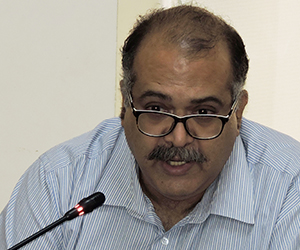
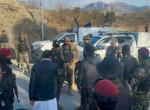



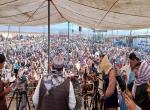
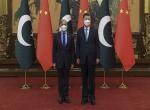
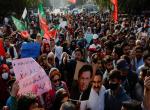
Post new comment